Quick question: what’s the best lens for photographing wildlife at different distances? A telephoto zoom, of course, because then you can zoom for the focal length and framing you want. But if that’s true, then why did I take a fixed telephoto with me on the safari I just led to Africa? Because, paired with two teleconverters and one camera feature, it actually gave me MORE focal lengths to work with. Let me explain…
I’ve been taking people to the Serengeti, in Tanzania, for nearly twenty years now. Up until this trip, I’ve always used Nikon’s 200-400mm f/4 or 200-500mm f/5.6 lenses. But photography is a creative process, and that means trying different things. So instead of choosing between those same two lenses once again, I decided to bring the relatively new Nikkor Z 400mm f/4.5 VR S lens. Fairly compact, light and very sharp, it’s easy to hand-hold. Plus, paired with two Z teleconverters and shooting with the Nikon Z 8 (switching in and out of FX/DX crop mode for either 45-megapixels or 19.4-megapixels), I now have a choice of these focal lengths:
400mm (just the lens)
560mm (with 1.4X TC)
600mm (equivalent using the 400mm in DX crop mode)
800mm (with 2X TC)
840mm (equivalent using the 560mm in DX crop mode)
1200mm (equivalent using the 800mm in DX crop mode)
So instead of carrying a larger, heavier zoom, I’d have a lens that’s smaller and easier to handle, and with a little extra effort (swapping out teleconverters and cycling between FX/DX), end up with more options. Sure, I was giving up finer compositional control by not being able to zoom, but there’s another way to look at that as well. By not having the zoom, I was forced to shoot tighter or looser than I would have otherwise, which in reality, forced me to be more creative in my framing.
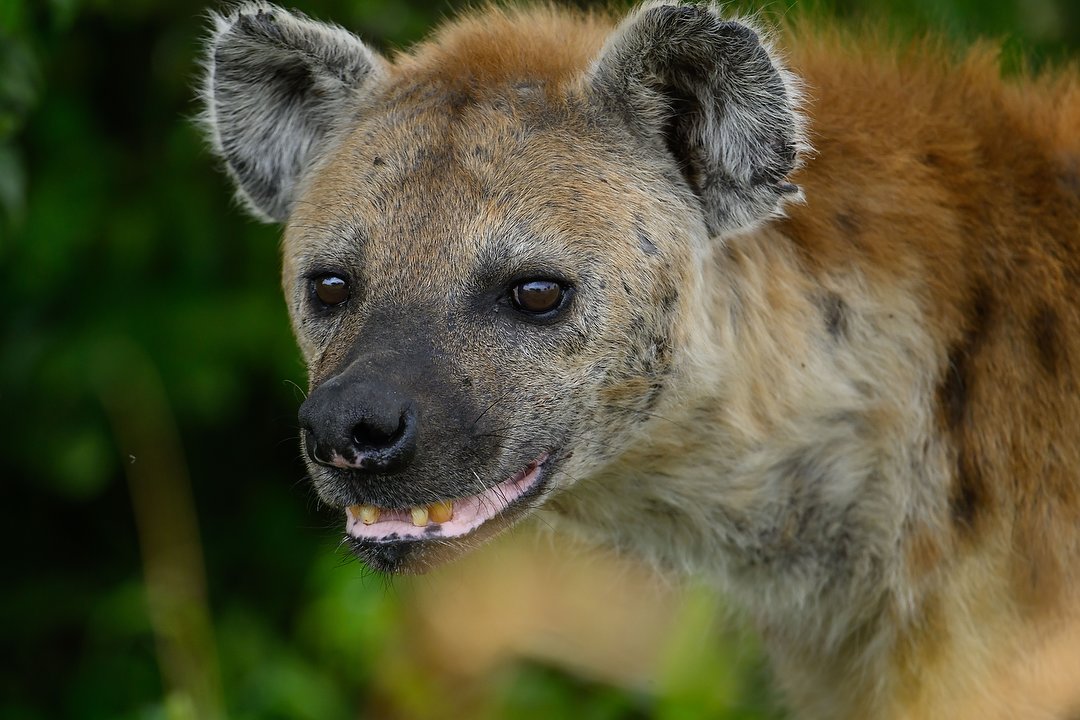
Thank goodness for eye-detect! This is the full-frame image I shot as a hyena walked by our truck while hunting for dead wildebeest. With a zoom lens, I’d have been zooming out as it came closer. With the fixed lens, though, I didn’t have that option, so was forced to shoot tight. And I honestly believe this is a better photo because of that. Nikon Z 8, Aperture Priority, Sunny white balance, ISO 1800, 1/2000 at f/6.3 in Matrix metering, -0.3 EV, Nikkor Z 400mm f/4.5 VR S with Z TC-1.4X for 560mm.
Here’s another big reason I decided to take this lens, instead of the zooms I’d used in the past – Nikon’s larger Z mount has allowed them to build their Z lenses to an even higher level of quality and sharpness. Which meant this one lens, paired with those two teleconverters (and the Z 8), could give me even better quality images than I’d made in the past. Finally, since the 400mm, paired with either teleconverter is very sharp wide open, I rarely used a smaller aperture. And that, of course, allowed me to better isolate my subjects using shallow depth of field (and avoid going to unnecessarily high ISOs).
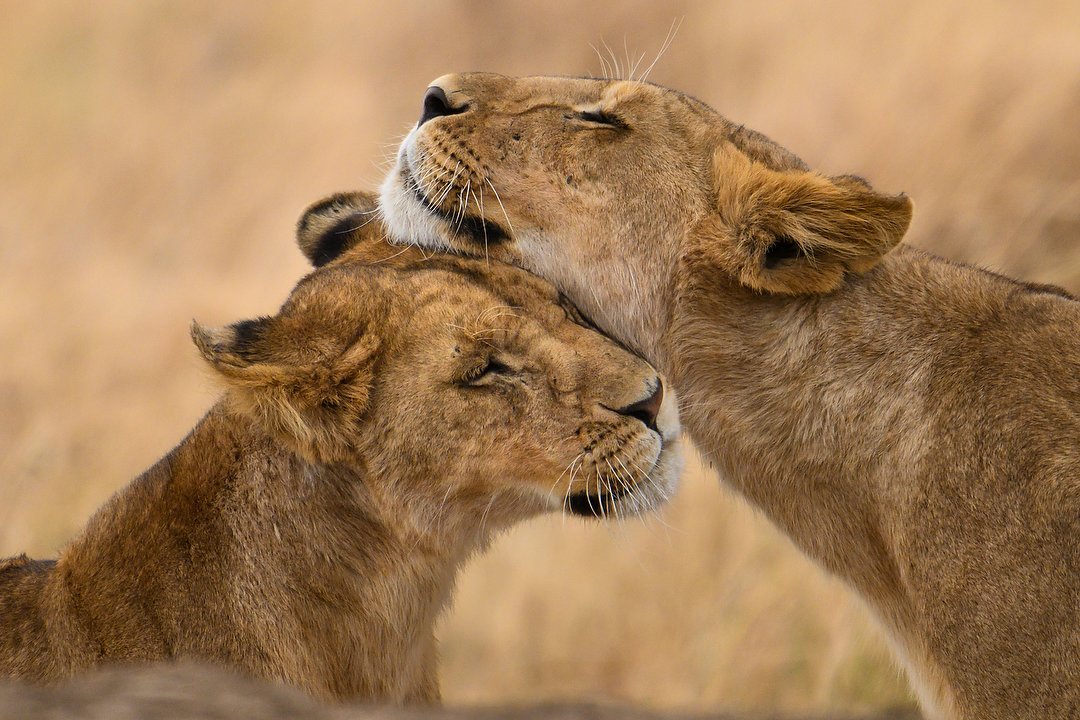
Two lions greet each other after waking from naps. By pairing the 400mm lens with the 2X teleconverter, I had 800mm to work with, and needed all of it for this photo. And while the aperture is now f/9, that amount of focal length, with the subjects relatively close, completely does away with the background. Nikon Z 8, Aperture Priority, Sunny white balance, ISO 1100, 1/1250 at f/9 in Matrix metering, 0.0 EV, Nikkor Z 400mm f/4.5 VR S with Z TC-2.0X for 800mm.
Of course, making pictures with this kit wasn’t just about the lens, teleconverters and focal lengths. I leaned heavily into Nikon’s new autofocus options, regularly changing them based on framing and subject. The 3D AF-area mode was my default, with “Animal” subject detection turned on. But I sometimes switched to Auto-area AF, or a custom Wide-area box, depending on what I was shooting. For birds, I often switched to Pre-release capture, to easily catch them taking off. Frame rate was another setting I regularly changed, quickly cycling between 6, 8, 15, 20 and 30 frames-per-second, again based on subject and type of action. In other words, I leveraged as many of the goodies packed into the Nikon Z 8 as I could. After all, what’s the point of having a state-of-the-art digital camera if you’re not taking advantage of all of its features?
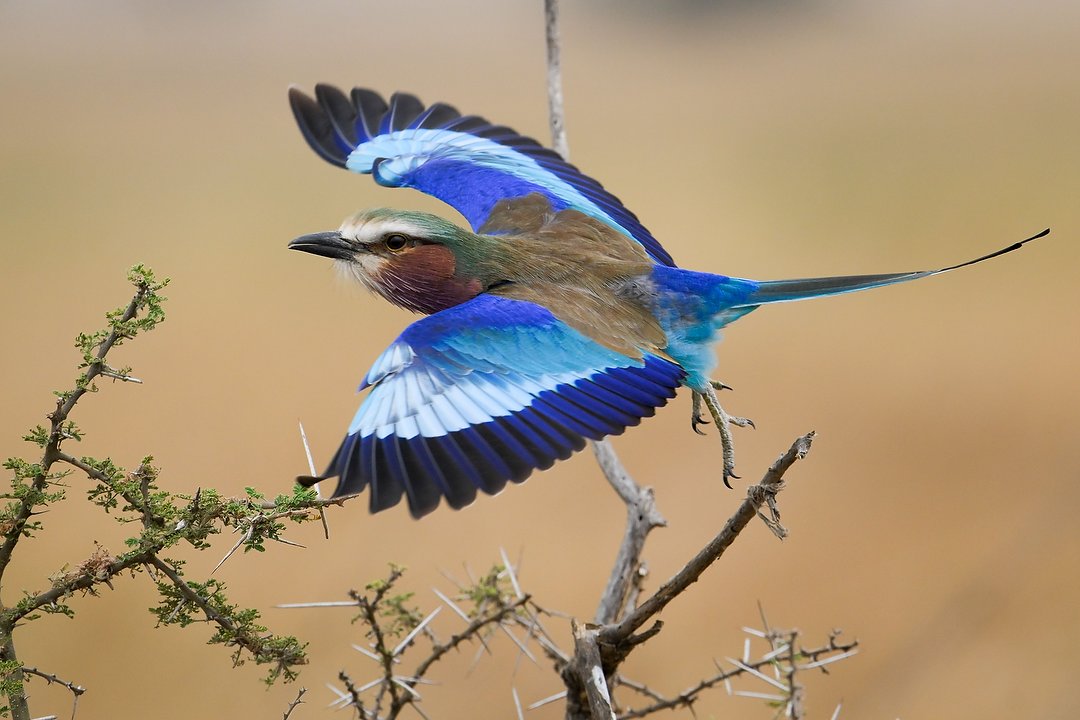
Using the Nikon Z 8’s Pre-release feature, I could shoot at 30 frames-per-second and actually wait until AFTER the action to push the shutter button and get the picture. That makes capturing photos like this, of a Lilac-breasted roller launching off an acacia tree, pretty easy. A couple of other people in my group were also using a Z 8, so I showed them how to take advantage of this amazing option. Nikon Z 8, Manual exposure, Sunny white balance, ISO 400, 1/2000 at f/6.3 in Matrix metering, -0.3 EV, Nikkor Z 400mm f/4.5 VR S lens.
In fact, speaking of features, you may be wondering why I didn’t take my Nikon Z 9 and Nikkor Z 400mm f/2.8 TC? After all, the Z 9 offers a few more features and longer battery life. And that lens is faster (wider aperture) than the 400mm f/4.5, plus the 1.4X teleconverter’s already built in. So why not that combination, along with the 2X teleconverter? Simple. Size and weight. I’d be taking multiple flights through multiple airports to get halfway around the world, then loading in and out of safari trucks and shooting from a limited space within them. Carrying and managing bigger gear would make my life more difficult. As I like to tell my students, photography is all about choices. You’ll rarely find yourself with only one way of doing something. The key is in choosing the one that’s right for you, for that situation. It all comes down to the kind of pictures you want to make and how you’re going to do that. For me – for this trip – the Z 8 paired with the 400mm f/4.5 and teleconverters were the perfect combination.
This won’t be the last time I take a group to Africa, and guess what? I’m sure that next time I’ll bring a different kit. Because again, what’s the point of doing the same thing the same way over and over?
So now you know what gear I used on this photo adventure and why. Now let me show you a few more photos, and explain how I made them:
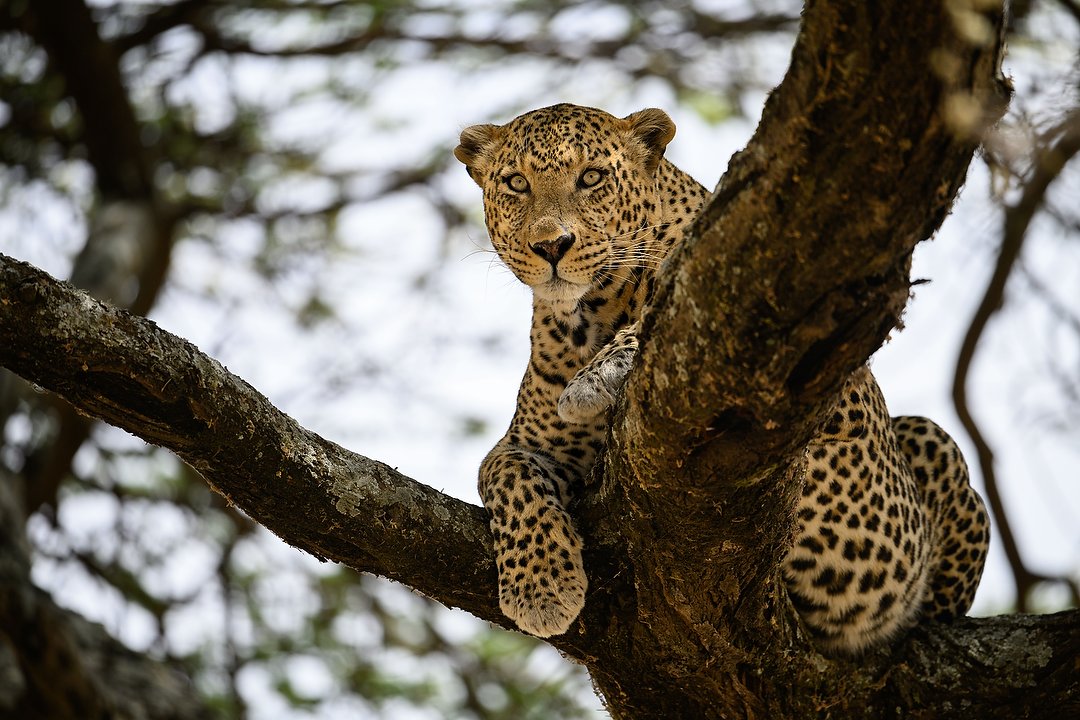
This is another full-frame, 45-megapixel image shot with the Nikkor 400mm f/4.5 lens last week. I kept the aperture wide open nearly the entire trip in order to take advantage of the shallow depth of field it creates, to help the backgrounds melt away. If they were in focus, those branches behind the leopard would be really distracting. Nikon Z 8, Aperture Priority, Sunny white balance, ISO 450, 1/1250 at f/4.5 in Matrix metering, +0.7 EV (to compensate for the bright sky behind the leopard), Nikkor Z 400mm f/4.5 VR S lens.
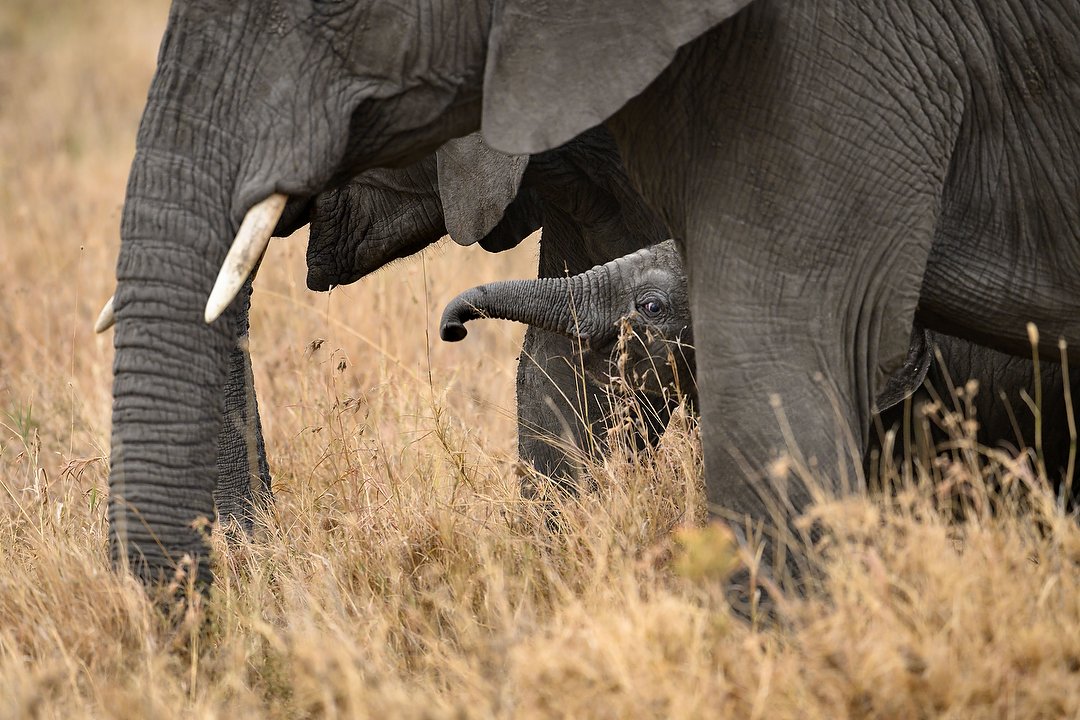
Again, using 400mm and staying wide open at f/4.5 meant that if I was focused on the baby elephant’s face, it would be the only area in sharp focus. And that makes it easier for me to keep the viewer’s attention there. Doesn’t hurt that those little guys are so darn cute! Nikon Z 8, Aperture Priority, Sunny white balance, ISO 1250, 1/640 at f/4.5 in Matrix metering, +1.0 EV, Nikkor Z 400mm f/4.5 VR S lens.
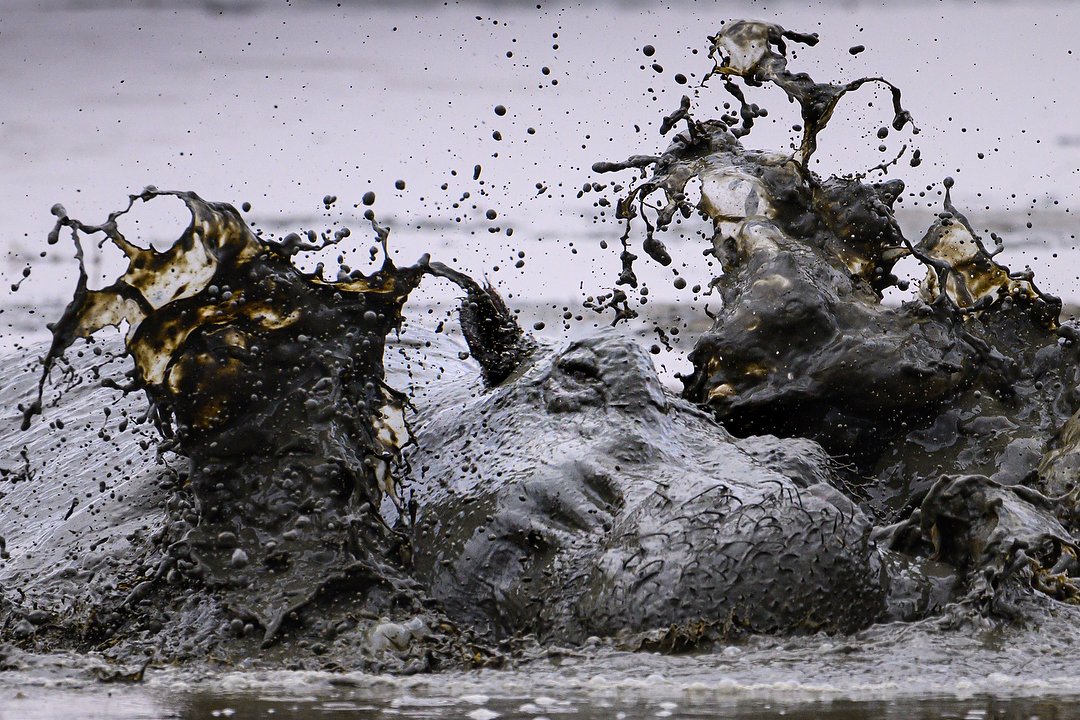
Yes, there’s a hippo in the middle of that muck. In this case I’ve added the 1.4X teleconverter to take me from 400mm to 560mm, but again stayed at the maximum aperture, now f/6.3, to again keep the background nice and soft. Nikon Z 8, Aperture Priority, Sunny white balance, ISO 1250, 1/1250 at f/6.3 in Matrix metering, 0.0 EV, Nikkor Z 400mm f/4.5 VR S with Z TC-1.4X for 560mm.
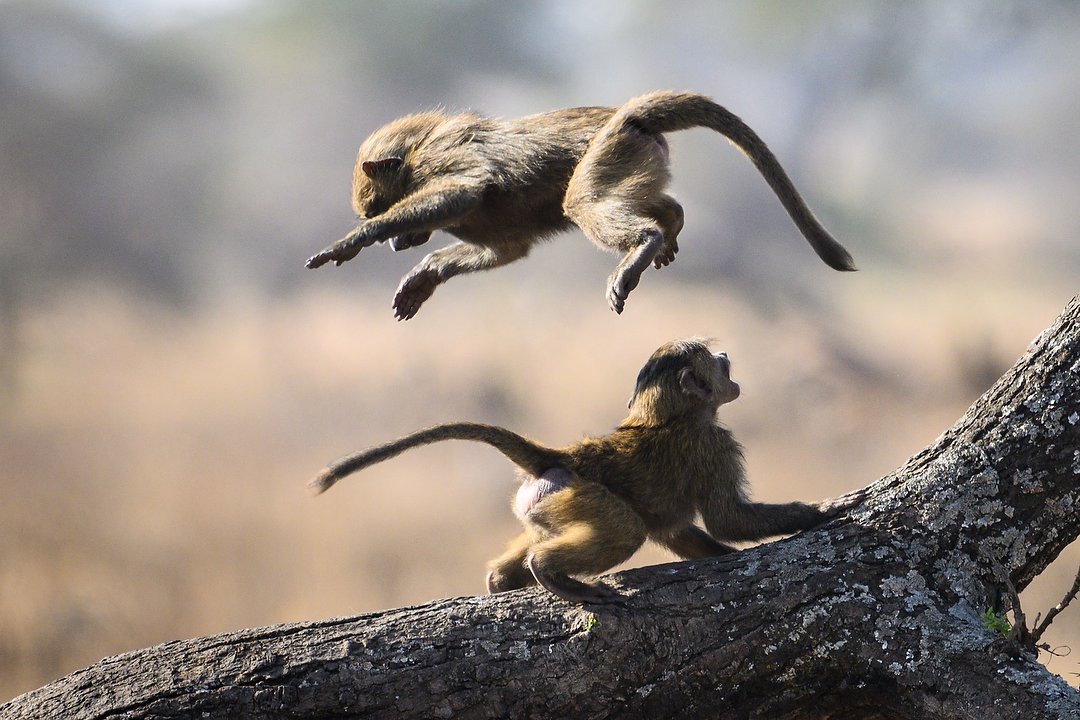
Even with the 1.4X teleconverter taking me out to 560mm, these playful monkeys were a bit far away. Not having time to add the 2X teleconverter, I took advantage of the camera’s 45-megapixels and cropped in. This final image still has nine-million pixels, more than enough for large use on screen, or a nice print. Nikon Z 8, Aperture Priority, Sunny white balance, ISO 720, 1/1600 at f/6.3 in Matrix metering, -0.3 EV, Nikkor Z 400mm f/4.5 VR S Z lens with TC-1.4X added for 560mm.
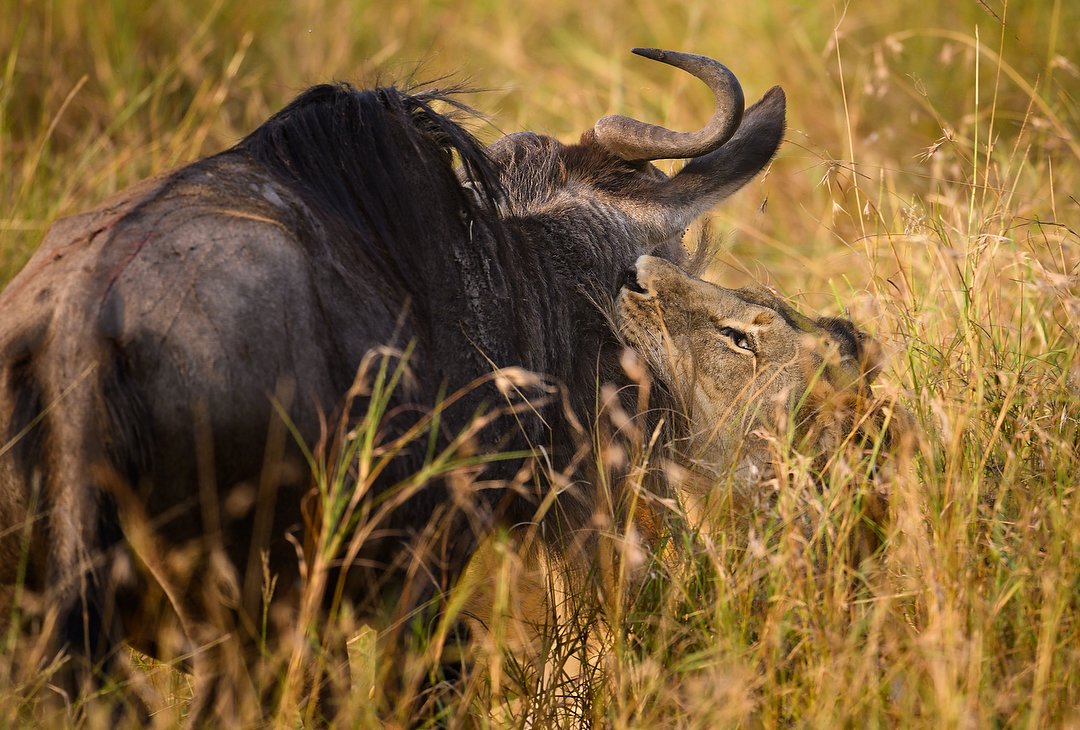
A lioness clamps down on a wildebeest’s windpipe to suffocate it. Called “the killing bite,” done on the nose, mouth or throat, this is how the big cats often kill their prey. Despite the tall grass, the camera’s 3D AF-area mode was able to lock onto the lion’s eye. Nikon Z 8, Aperture Priority, Sunny white balance, ISO 280, 1/800 at f/4.5 in Matrix metering, 0.0 EV, Nikkor Z 400mm f/4.5 VR S lens.
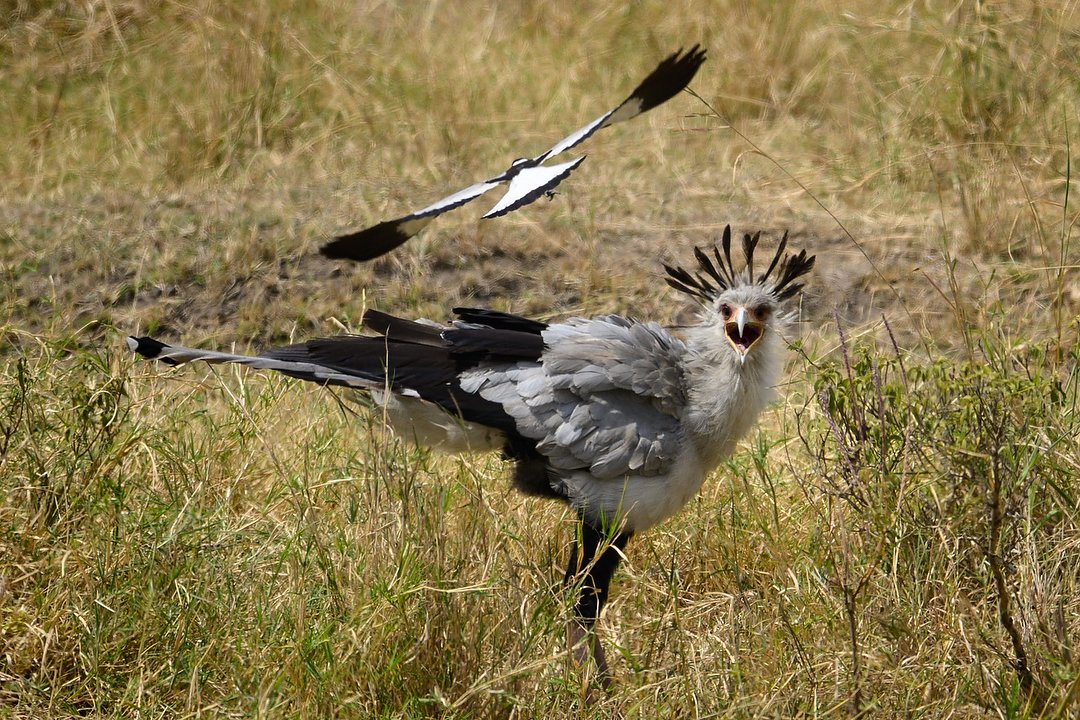
A Shrike (in the air) tries to chase a Secretary bird away from its nesting area. Nikon Z 8, Aperture Priority, Sunny white balance, ISO 110, 1/1600 at f/4.5 in Matrix metering, -0.3 EV, Nikkor Z 400mm f/4.5 VR S lens.
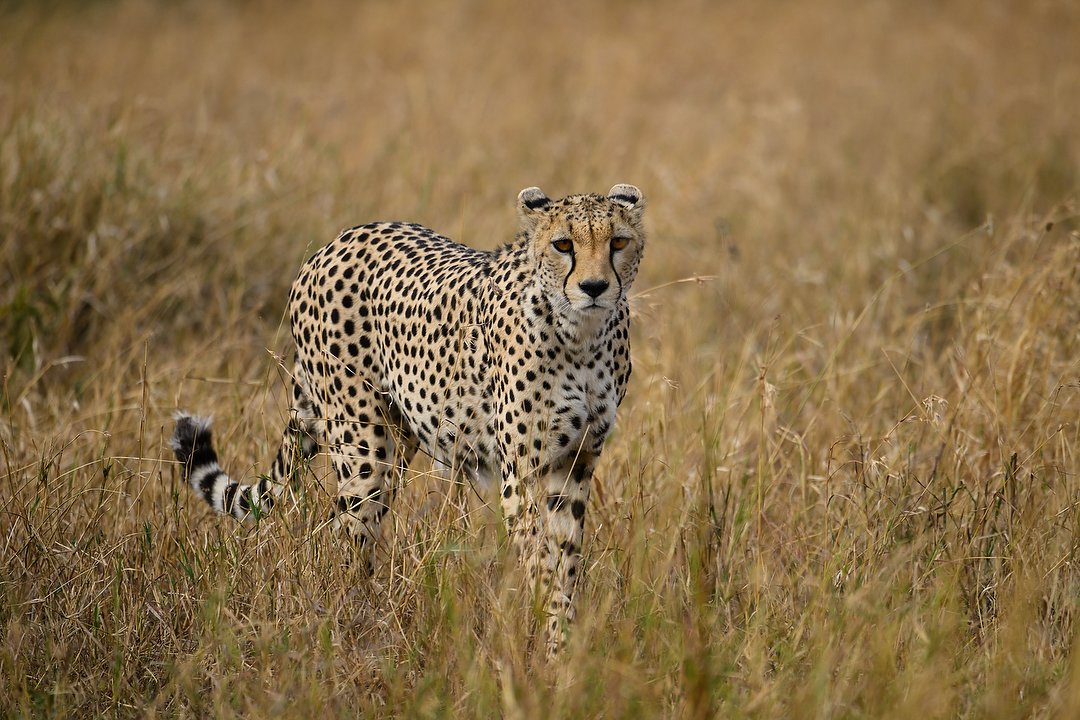
Combining eye detect and the shallow depth of field created by shooting the lens wide open (at 400mm, 560mm and 800mm) is what let me make beautiful photos like this throughout the trip. Of course, it never hurts when the cheetah walks right towards you! Nikon Z 8, Aperture Priority, Sunny white balance, ISO 450, 1/1250 at f/6.3 in Matrix metering, -0.3 EV, Nikkor Z 400mm f/4.5 VR S with Z TC-1.4X for 560mm.
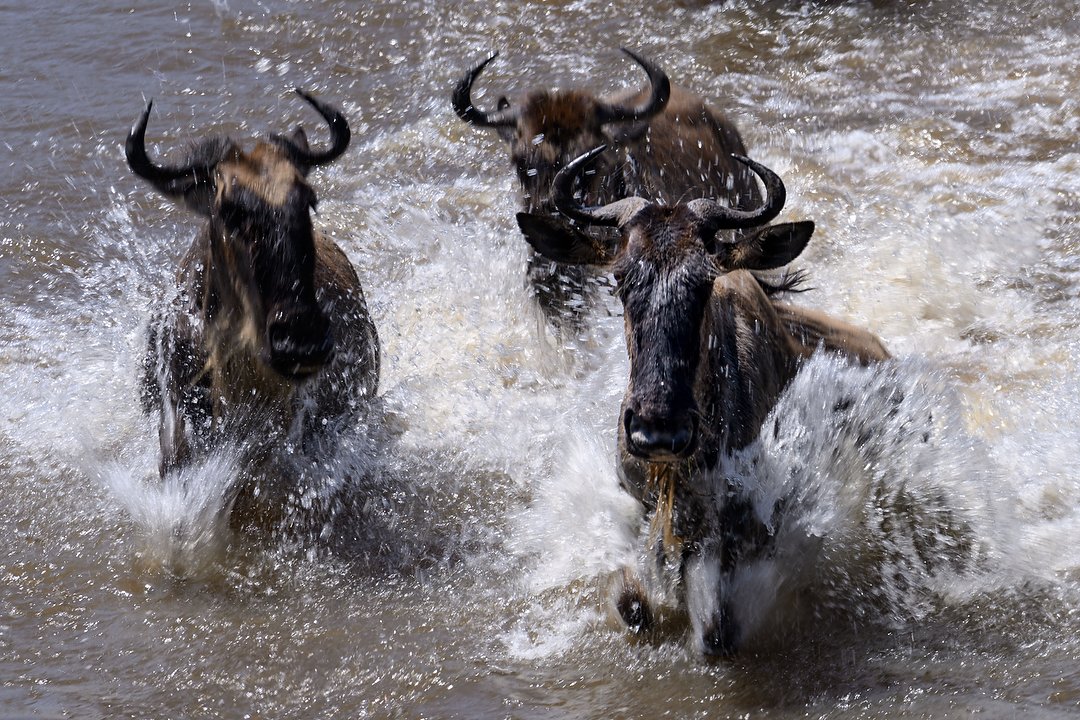
We spent two days photographing the great migration at the Mara River, as Wildebeests crossed north. Shooting from our truck on a bluff above the river, I used a slow shutter speed to show movement in the splashing water. Nikon Z 8, Aperture Priority, Sunny white balance, ISO 64, 1/100 at f/11 in Matrix metering, 0.0 EV, Nikkor Z 400mm f/4.5 VR S with Z TC-1.4X for 560mm.
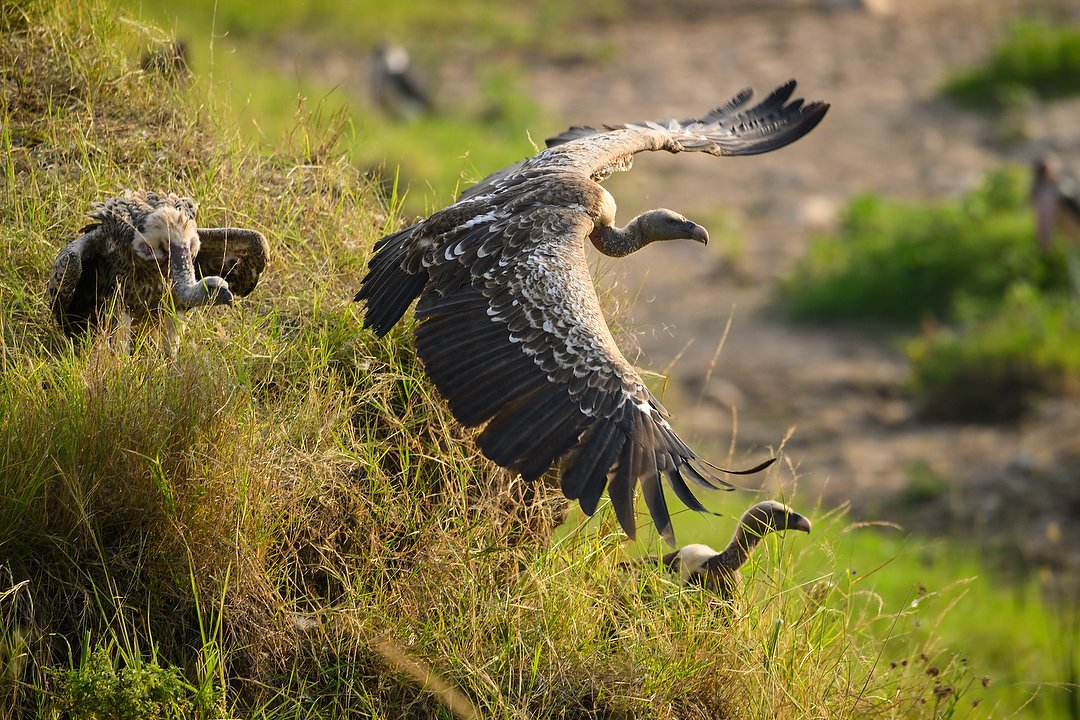
This is another full-frame 45MP image using the 1.4X teleconverter with the 400mm. Literally hundreds of vultures had gathered at the river to feed on dead wildebeests who drowned after breaking a leg during the crossing. Nikon Z 8, Aperture Priority, Sunny white balance, ISO 800, 1/1600 at f/6.3 in Matrix metering, 0.0 EV, Nikkor Z 400mm f/4.5 VR S with Z TC-1.4X for 560mm.
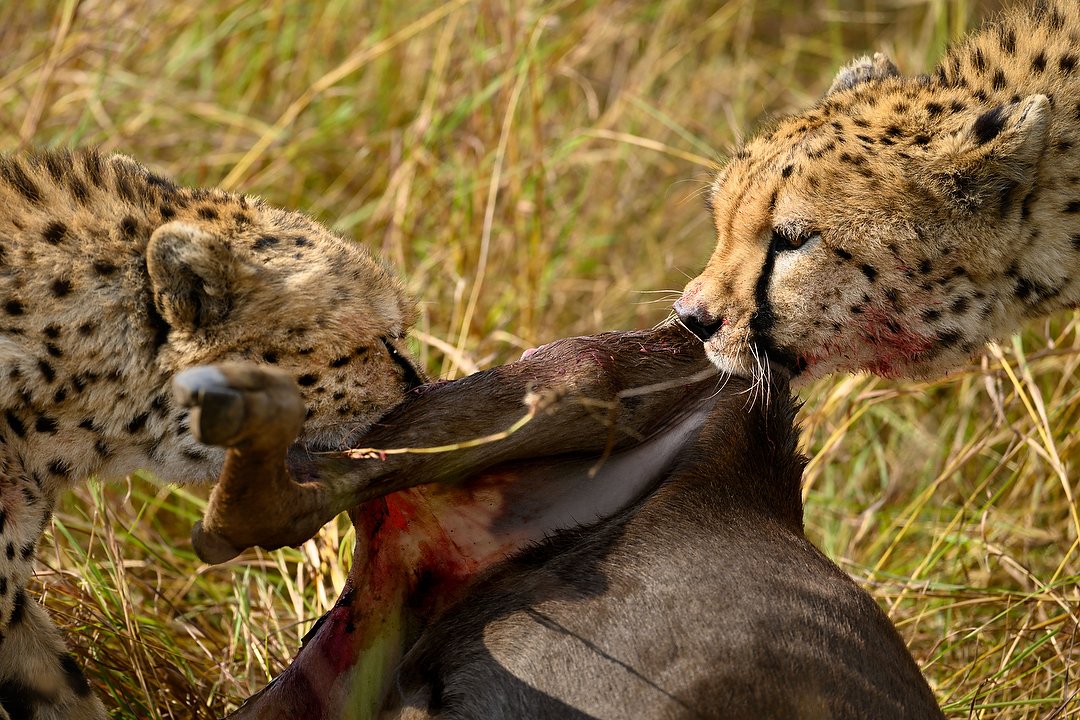
We were watching this pair of male cheetahs stalk a group of wildebeest, and next thing we knew they had run one down. Again, the shallow depth of field and sharp focus kept the grassy background from being distracting. Nikon Z 8, Aperture Priority, Sunny white balance, ISO 360, 1/1600 at f/5 in Matrix metering, 0.0 EV, Nikkor Z 400mm f/4.5 VR S lens.
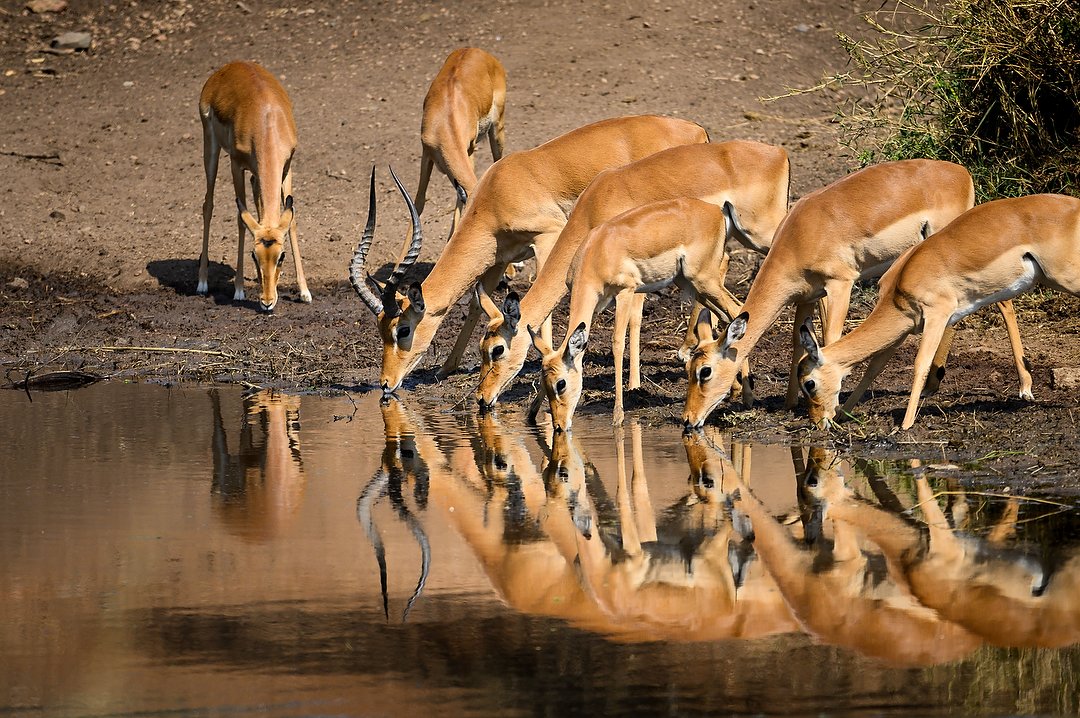
At 400mm, the framing on this scene was a little loose, and I was afraid the Impala would move before I added a teleconverter. So I just tapped my Function 2 button (Fn2) – which was programmed to take me into DX crop mode – to get this tighter, better composition. That took me from 45-megapixels to nearly 20, which is still overkill for a large print. Of course I could have shot it looser and simply cropped later, on the computer. But I try, whever possible to get it as close to perfect in the camera. Nikon Z 8, Aperture Priority, Sunny white balance, ISO 220, 1/1600 at f/4.5 in Matrix metering, 0.0 EV, Nikkor Z 400mm f/4.5 VR S lens.
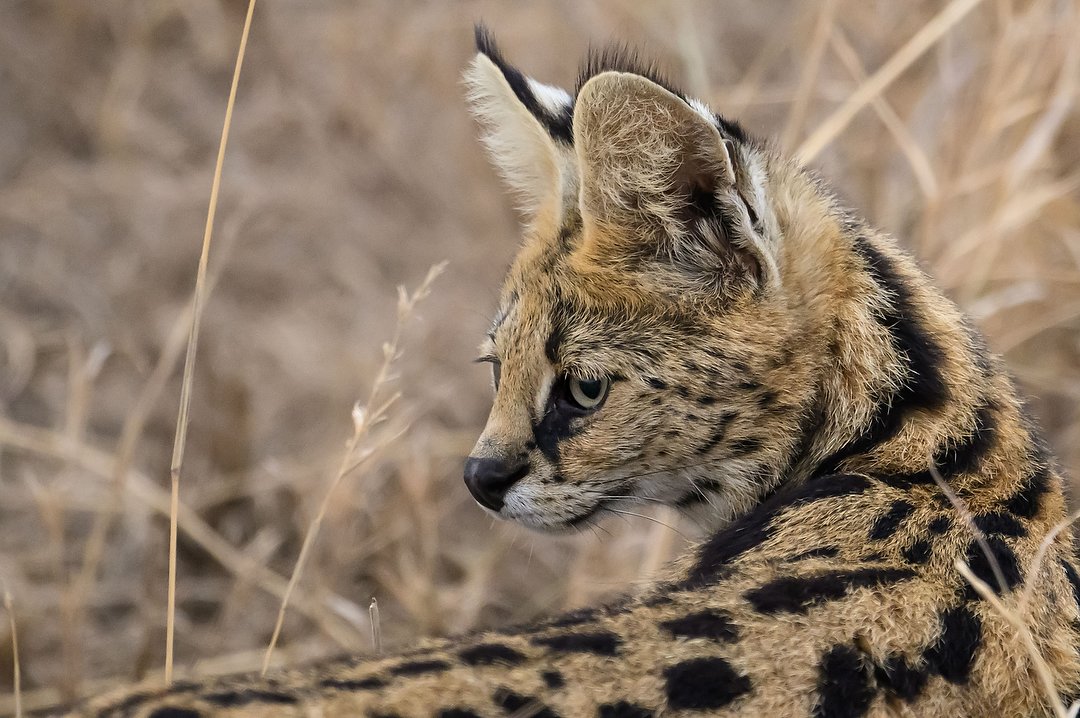
Leaving camp just after sunrise, we came across this Cerval cat hunting along the side of the dirt road. Leaning out the window of my truck, I got about a dozen frames in the less than a minute it was in sight. About the size of a house cat, I’ve rarely seen them in the past. Being early, there wasn’t much light yet, but the Z 8 does such a nice job at high ISOs that that noise is rarely noticeable. Nikon Z 8, Aperture Priority, Sunny white balance, ISO 3600, 1/640 at f/4.5 in Matrix metering, 0.0 EV, Nikkor Z 400mm f/4.5 VR S lens.
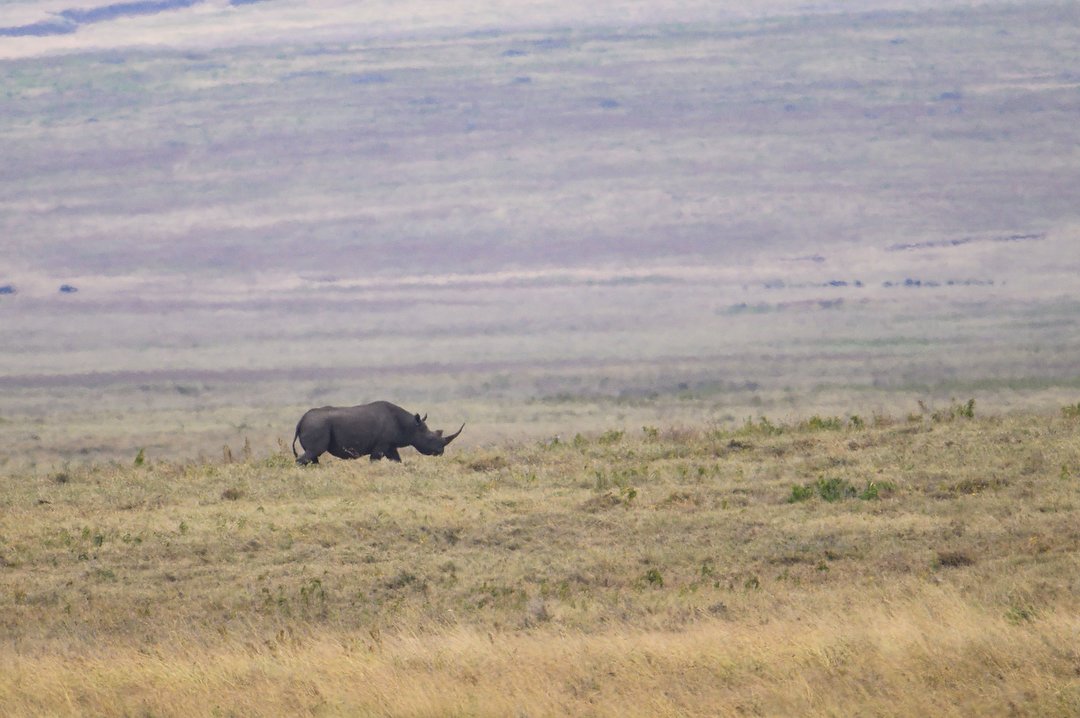
In the wild, outside of game parks, rhinos are nearly extinct. But Ngorongoro Crater has a healthy group of over 30. Visiting there on the final day of the trip, our hope was to see and photograph one. And we got lucky. Unfortunately, it was far away, but with the 2X teleconverter and then going to DX crop mode, this is the 20-megapixel image I ended up with. Nikon Z 8, Aperture Priority, Sunny white balance, ISO 720, 1/1250 at f/9 in Matrix metering, 0.0 EV, Nikkor Z 400mm f/4.5 VR S with Z TC-2.0X for 800mm.
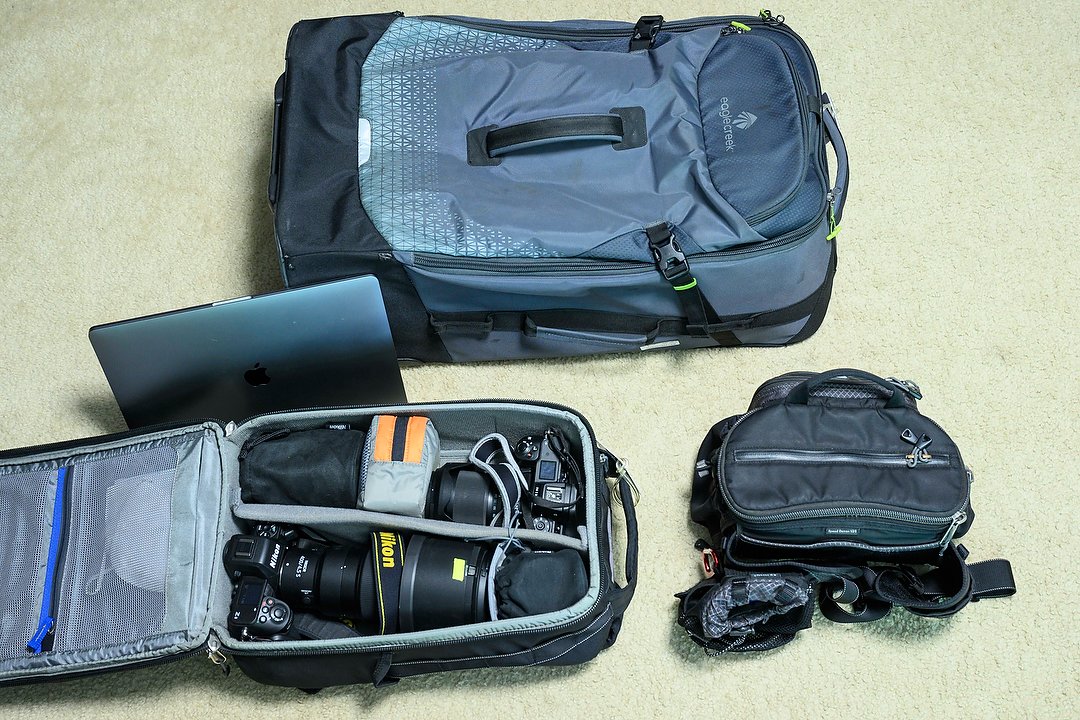
Here’s everything I took with me to Africa. At lower left, in a Think Tank Airport Essentials backpack, is all the gear I needed for photography, weighing in at just under 20 lbs. You can see how relatively compact the Nikon Z 8 and 400mm f/4.5 lens are. Also in that pack was my 15-inch laptop, Nikon Z 6 II, Nikkor Z TC-1.4X and TC-2X, Nikkor 24-200 f/4-6.3, Nikkor 20mm f/1.8 plus FTZ adapter, cards, batteries, charger, card reader, USB-C power supply and a few odds and ends.
(If you like this story, please share it with your friends and let them know about the links on photography that I post on my business Facebook page. I’m also on Instagram and Twitter, @reedhoffmann. And if you’re curious about the workshops I teach, you can find them here. Finally, you can subscribe to this blog on my home page.)

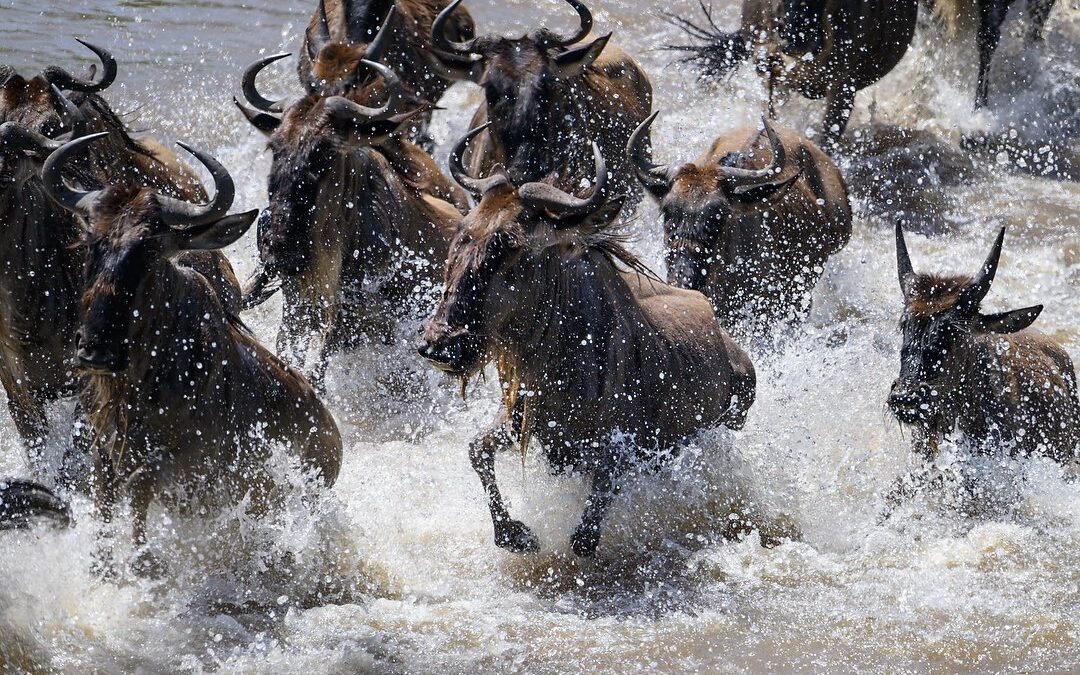
recently dit a trip to Botswana on a river safari. Took the same except not the TC2.0. my second body was the Fuji XH2s with 16-80f4. It was a joy to travel with this compact equipment and got all the shots I needed.
That’a a nice idea, a smaller camera for the second body. My only concern would be that if either of the cameras failed, you’d be unable to use its lens(es) on the other body. But a good solution for going extra-light.
Really nice photographs bravo👏👏👏👏👏
Indeed if toy have 2 TC you can multiply your one lens as you want, but you must have something as a cover to change the TC in case there is wind, sand, etc
I have d5 with AF I 300 f2. 8 and 200-500 with 1.7 and 2.0 TC
Absolutely, George. I do a quick-change, and always have front and rear caps for everything.
Pure genius. No need to blush. Great story as always.
Great story & photos!